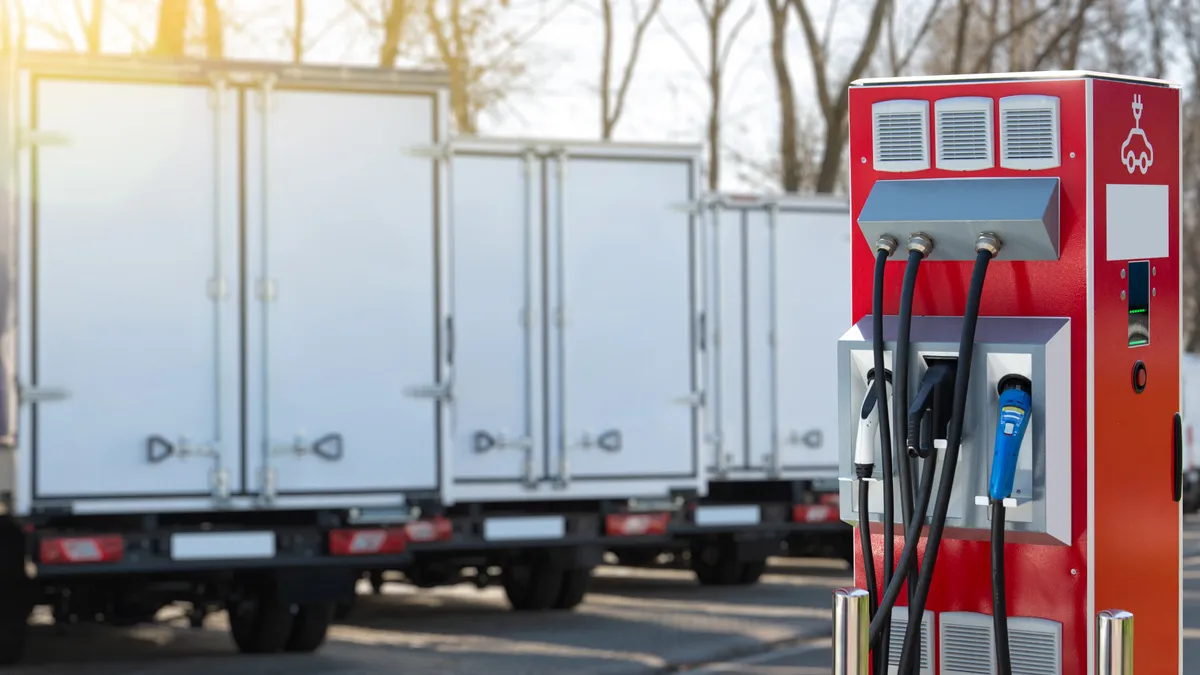Dive Brief:
- The California Air Resources Board (CARB) on Tuesday unveiled proposed regulations that would, if approved by the board this summer, require that 35% of model year 2026 car sales in California be zero-emission vehicles (ZEV).
- The regulations provide a pathway for meeting California's goal for the sales of all new passenger vehicles in the state to be zero-emission by 2035, as outlined in an executive order issued by California Gov. Gavin Newsom, D, in September 2020.
- The proposed regulations represent the next important phase in the electric vehicle market, said Don Anair, research and deputy director of the clean transportation program at the Union of Concerned Scientists. "This proposal really creates that certainty for investment by the industry, [and] ensures everybody in the industry is pulling in the same direction," he added.
Dive Insight:
Newsom's executive order directed CARB to put together regulations that would mandate the 2035 goal, a move that his administration estimated will reduce more than 35% of greenhouse gas emissions emitted by cars across the state. Reducing emissions from the transportation sector is also a critical part of achieving the state's broader goal of reaching carbon neutrality by 2045, as well as benefiting communities burdened by pollution.
CARB developed the first iteration of its Advanced Clean Cars program in 2012, at which time there were less than five zero-emission and plug-in hybrid-EV models available in California. By the end of last year, however, that number had increased to 60 and more than 1 million such vehicles were sold in the state. According to CARB, 74% of drivers currently report having some interest in the EV market and in 2021, the market share for EVs jumped to 12.4% from 7.8% the previous year.
The Advanced Clean Cars II regulatory proposal released this week, meanwhile, recommends an annual ZEV requirement that begins at 35% in 2026, before ramping up to 68% in 2030 and eventually, the 100% goal by 2035. The report also examines the costs and benefits of these proposals, noting that the cost to manufacturers of light-duty vehicles would be high in the early years of the regulations before eventually decreasing. In total, the proposal is expected to cost businesses $30.2 billion between 2026 and 2040.
However, the proposal is also expected to reduce the overall costs of transportation in the state, achieving net cost savings of $81.8 billion between 2026 and 2040, according to CARB analsis. Individual vehicle purchasers are also expected to see savings.
The proposal of 35% in 2026 is "eminently doable. It's really the minimum that's needed to get us started," Anair said.
The proposed regulations are only one pillar of the policy solutions needed to decarbonize the transportation system, he added.
"The other pieces are investments in infrastructure, supporting the grid as these vehicles are coming to market. And we've seen significant investments both in California but also as part of the bipartisan infrastructure bill," Anair said.
By setting standards to put more electric vehicles on the road, California can protect drivers from volatile gasoline prices, Kathy Harris, clean vehicles and fuels advocate with the Natural Resources Defense Council, said in a statement.
"Building on this, the state needs to ensure that programs are delivering emission reductions to those communities where the public health needs are the greatest. Strong standards will place even more electric cars and trucks in the showroom and increase access to technologies that will get us on the freeway to a cleaner, healthier future," Harris added.














